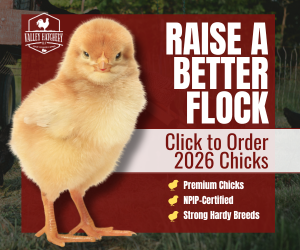Hi, welcome to the forum, Glad you joined.
It probably won't take you long to realize you can get some really differing opinions on here. We keep them for so many different goals, different climates, different management techniques, different facilities, different flock make-ups, the list goes on and on. and so many different things work. It's not surprising we have different experiences and different opinions. It's not like there is only one way to do something and all other ways are wrong, but that so many can be right. I think that is one of the problems on this forum, you have so many different options that can work but you have to pick one out. For some of us certain things work better than others, but with no experience how do you know which is right for you? It can be challenging and confusing.
Commercial operations have determined a fairly standard feeding regimen for chicks that will become a laying flock. You will see that printed on many bags of commercial chicken feeds. In general it involves a high protein feed (18% to 20%) the first month or so to get them feathered out and give them a good start, then they cut back to a lower protein feed (maybe 16%) to slow their growth a bit so the skeleton and internal organs can keep up. Then at around 3 months they cut back a bit more (15%) to help control that maturation process. Then a little before they are ready for them to start to lay, they change the feed to a bit higher protein (16%) and increase the calcium content since they will need the extra calcium for egg shells.
You don't need to do that. Commercial operations use special bred hybrid chickens bred for heavy laying. Your breeds are not those. Commercial operations manage when they start to lay, partly by diet but to a large extent by managing light. With their specially bred hens they could start to lay really young, maybe young enough to hurt themselves if their body is not ready. Again, you don't have to worry about that.
People that raise chickens for show do not follow this feed regimen. They feed their chickens a much richer diet as they grow so they will grow bigger. Again, these are specially bred birds. Yours are not. Chickens raised for meat are also fed differently.
I'm going through all this to say you have a lot of freedom in how you feed your chickens, especially in regard to protein. My chicks get an 18% protein Starter for the first month. After that the entire flock gets a 15% Finisher/Developer with oyster shell offered on the side for the ones that need the calcium for their egg shell. But mine forage for a lot of their food so I've lost the ability to micromanage their every bite.
If you are providing practically everything they eat it is a good idea for their feed to make up at least 90% of what they eat. Standard chicken feed provides a balanced diet of the many different nutrients they need. It's not just protein and calcium but fats, fiber, minerals, and vitamins among others. You can provide other food such as, scratch, kitchen wastes, garden wastes, bugs, or green stuff, but the general recommendation is to keep that total to 10% or less of their daily diet. If you can come up with a way to do that and cut feed costs more power to you.
And that's my opinion.





